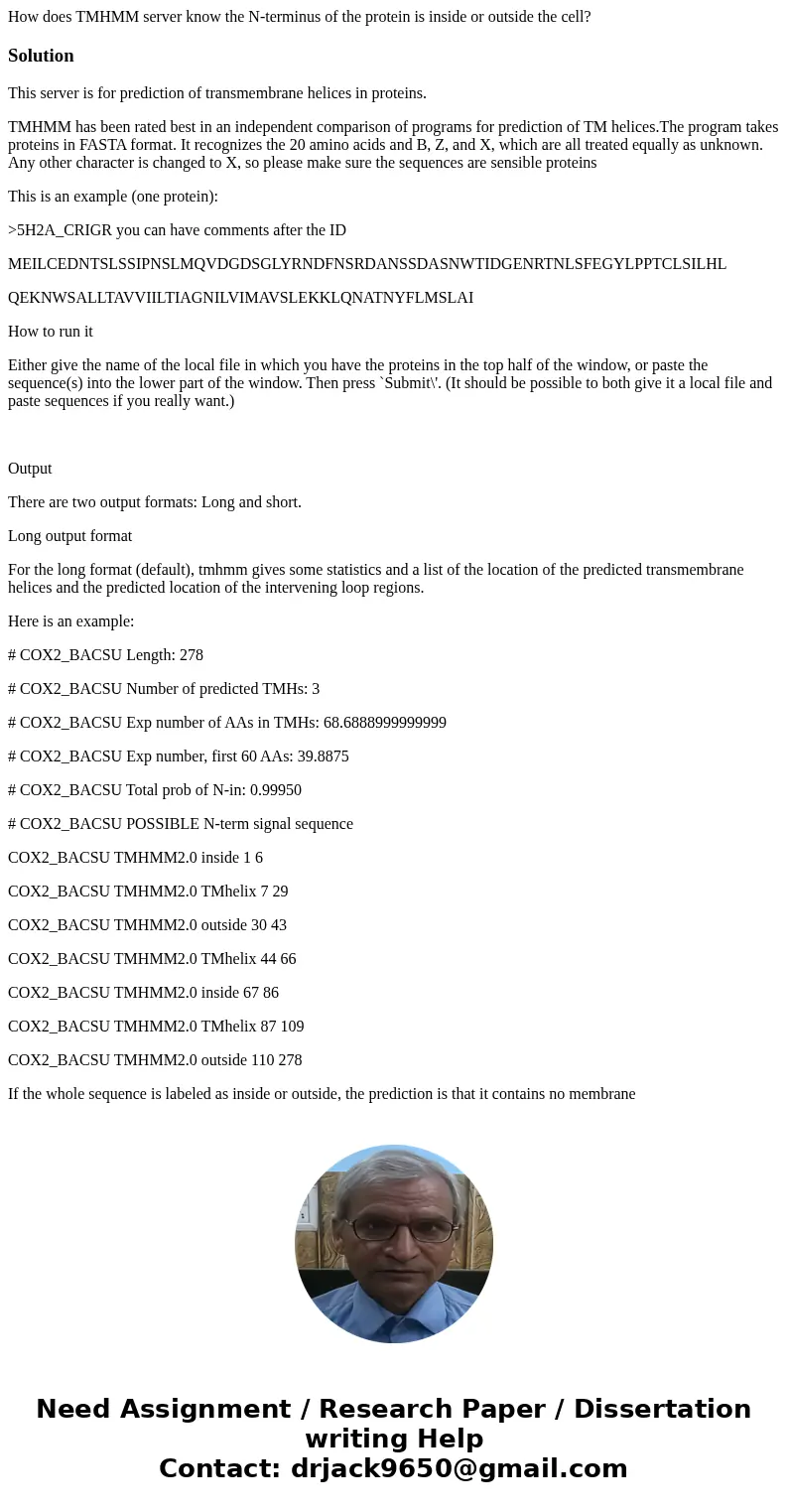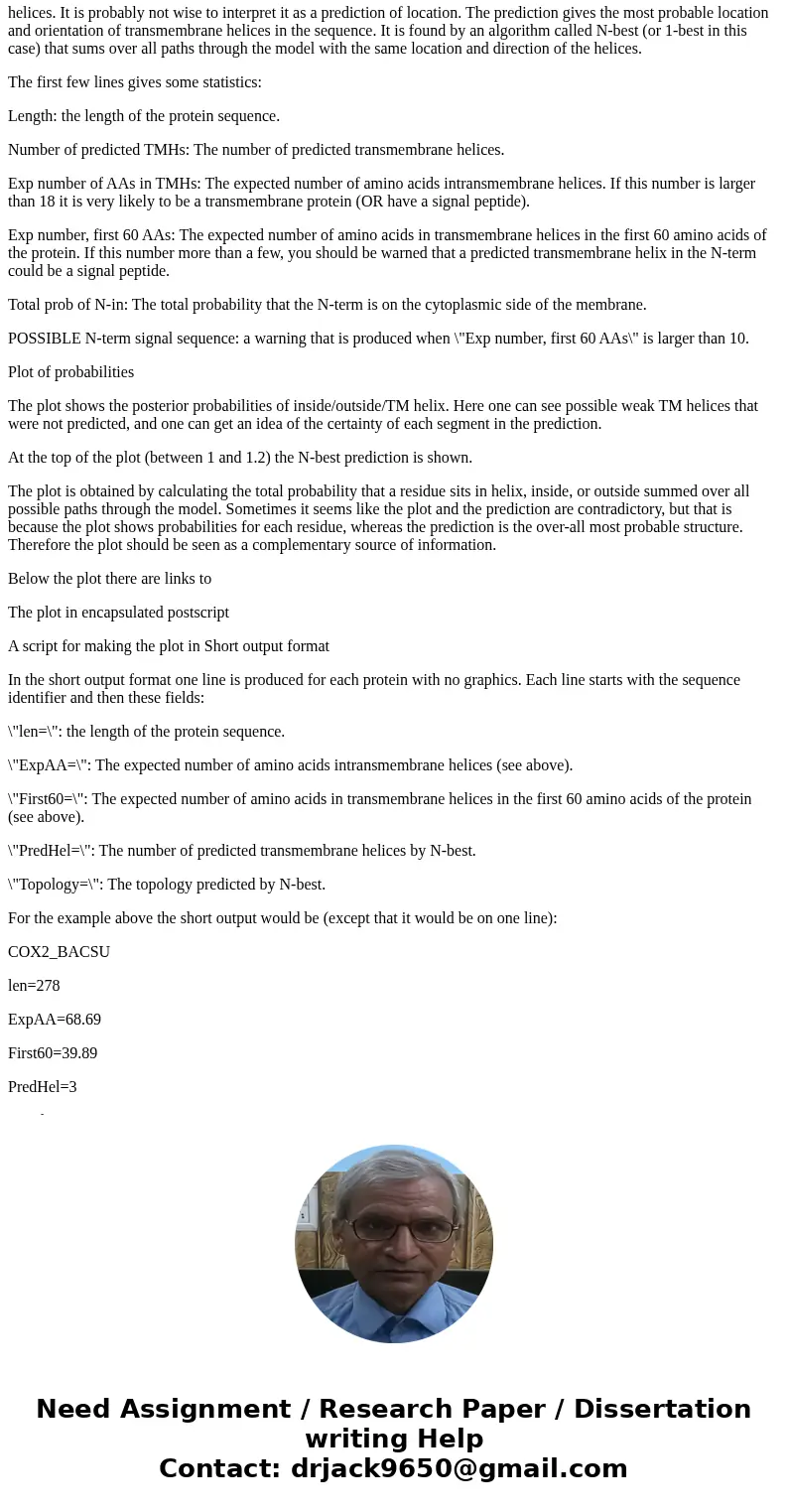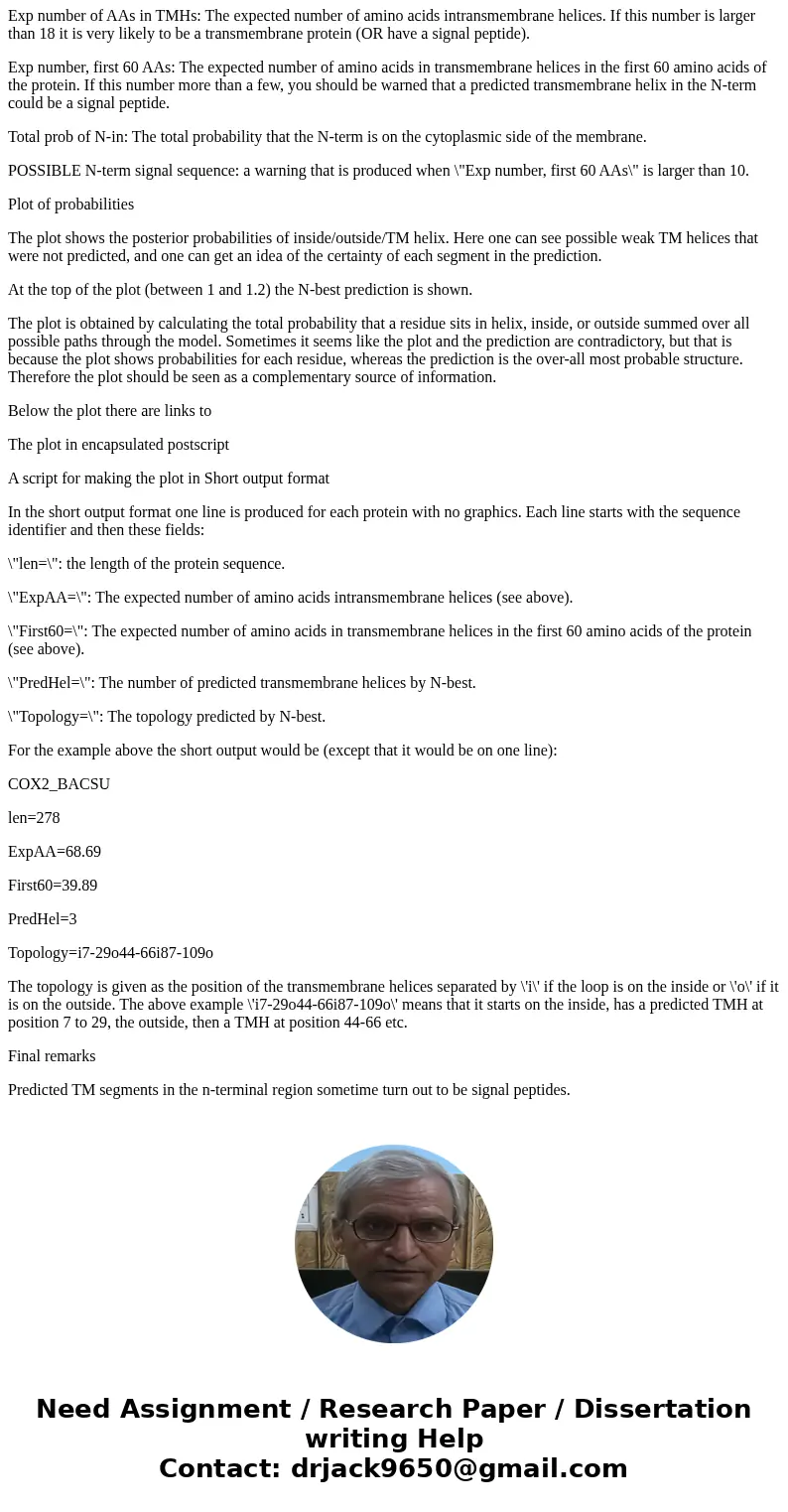How does TMHMM server know the Nterminus of the protein is i
How does TMHMM server know the N-terminus of the protein is inside or outside the cell?
Solution
This server is for prediction of transmembrane helices in proteins.
TMHMM has been rated best in an independent comparison of programs for prediction of TM helices.The program takes proteins in FASTA format. It recognizes the 20 amino acids and B, Z, and X, which are all treated equally as unknown. Any other character is changed to X, so please make sure the sequences are sensible proteins
This is an example (one protein):
>5H2A_CRIGR you can have comments after the ID
MEILCEDNTSLSSIPNSLMQVDGDSGLYRNDFNSRDANSSDASNWTIDGENRTNLSFEGYLPPTCLSILHL
QEKNWSALLTAVVIILTIAGNILVIMAVSLEKKLQNATNYFLMSLAI
How to run it
Either give the name of the local file in which you have the proteins in the top half of the window, or paste the sequence(s) into the lower part of the window. Then press `Submit\'. (It should be possible to both give it a local file and paste sequences if you really want.)
Output
There are two output formats: Long and short.
Long output format
For the long format (default), tmhmm gives some statistics and a list of the location of the predicted transmembrane helices and the predicted location of the intervening loop regions.
Here is an example:
# COX2_BACSU Length: 278
# COX2_BACSU Number of predicted TMHs: 3
# COX2_BACSU Exp number of AAs in TMHs: 68.6888999999999
# COX2_BACSU Exp number, first 60 AAs: 39.8875
# COX2_BACSU Total prob of N-in: 0.99950
# COX2_BACSU POSSIBLE N-term signal sequence
COX2_BACSU TMHMM2.0 inside 1 6
COX2_BACSU TMHMM2.0 TMhelix 7 29
COX2_BACSU TMHMM2.0 outside 30 43
COX2_BACSU TMHMM2.0 TMhelix 44 66
COX2_BACSU TMHMM2.0 inside 67 86
COX2_BACSU TMHMM2.0 TMhelix 87 109
COX2_BACSU TMHMM2.0 outside 110 278
If the whole sequence is labeled as inside or outside, the prediction is that it contains no membrane
helices. It is probably not wise to interpret it as a prediction of location. The prediction gives the most probable location and orientation of transmembrane helices in the sequence. It is found by an algorithm called N-best (or 1-best in this case) that sums over all paths through the model with the same location and direction of the helices.
The first few lines gives some statistics:
Length: the length of the protein sequence.
Number of predicted TMHs: The number of predicted transmembrane helices.
Exp number of AAs in TMHs: The expected number of amino acids intransmembrane helices. If this number is larger than 18 it is very likely to be a transmembrane protein (OR have a signal peptide).
Exp number, first 60 AAs: The expected number of amino acids in transmembrane helices in the first 60 amino acids of the protein. If this number more than a few, you should be warned that a predicted transmembrane helix in the N-term could be a signal peptide.
Total prob of N-in: The total probability that the N-term is on the cytoplasmic side of the membrane.
POSSIBLE N-term signal sequence: a warning that is produced when \"Exp number, first 60 AAs\" is larger than 10.
Plot of probabilities
The plot shows the posterior probabilities of inside/outside/TM helix. Here one can see possible weak TM helices that were not predicted, and one can get an idea of the certainty of each segment in the prediction.
At the top of the plot (between 1 and 1.2) the N-best prediction is shown.
The plot is obtained by calculating the total probability that a residue sits in helix, inside, or outside summed over all possible paths through the model. Sometimes it seems like the plot and the prediction are contradictory, but that is because the plot shows probabilities for each residue, whereas the prediction is the over-all most probable structure. Therefore the plot should be seen as a complementary source of information.
Below the plot there are links to
The plot in encapsulated postscript
A script for making the plot in Short output format
In the short output format one line is produced for each protein with no graphics. Each line starts with the sequence identifier and then these fields:
\"len=\": the length of the protein sequence.
\"ExpAA=\": The expected number of amino acids intransmembrane helices (see above).
\"First60=\": The expected number of amino acids in transmembrane helices in the first 60 amino acids of the protein (see above).
\"PredHel=\": The number of predicted transmembrane helices by N-best.
\"Topology=\": The topology predicted by N-best.
For the example above the short output would be (except that it would be on one line):
COX2_BACSU
len=278
ExpAA=68.69
First60=39.89
PredHel=3
Topology=i7-29o44-66i87-109o
The topology is given as the position of the transmembrane helices separated by \'i\' if the loop is on the inside or \'o\' if it is on the outside. The above example \'i7-29o44-66i87-109o\' means that it starts on the inside, has a predicted TMH at position 7 to 29, the outside, then a TMH at position 44-66 etc.
Final remarks
Predicted TM segments in the n-terminal region sometime turn out to be signal peptides.



 Homework Sourse
Homework Sourse